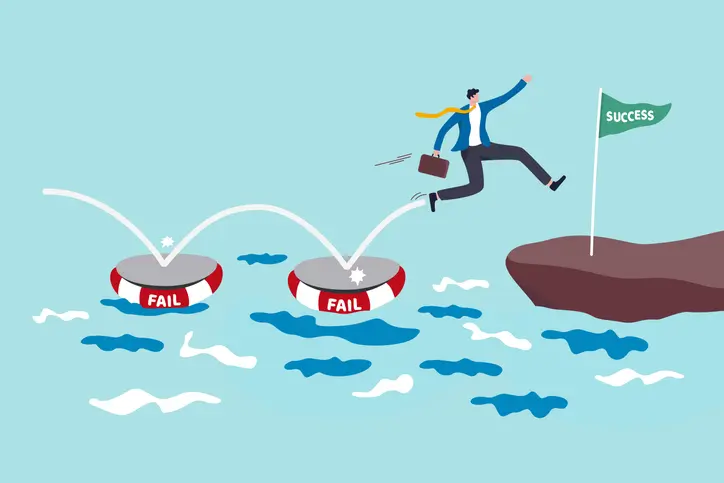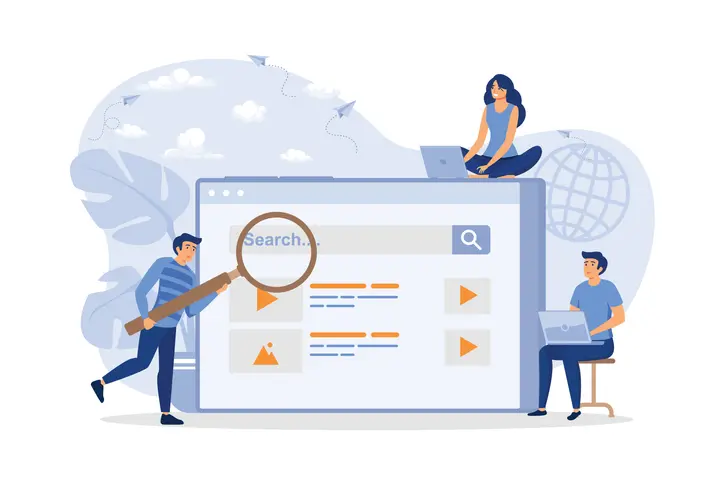
Companies that invest in UX design navigate economic downturns by understanding users
When budgets tighten and uncertainty rises, product teams face tough decisions. But companies that lean into a strong UX strategy in economic uncertainty often emerge more resilient — and closer to their customers.
Rather than guessing what users want, UX research reveals real behavior shifts, pain points, and opportunities for innovation. That insight helps companies pivot faster, retain customers, and launch solutions that actually meet evolving needs.
Here’s why UX strategy isn’t just “nice to have” when the economy dips: it’s an advantage.
UX strategy in economic uncertainty starts with research
The beauty of user experience is in the research. UX designers use a variety of research techniques to understand the people they are designing for. These techniques range from usability testing and heuristic evaluation, to observation in context and one-on-one interviews to gain qualitative insights. This type of research allows UX designers to understand the current and changing habits of the target customers. By gathering data, UX analysis can see how habits are changing and develop insights that will help guide the business about how to address those insights.
For example, say you are a local gym and you are worried because you’ve received questions from your members about a disease outbreak, like flu, measles, or COVID. You might invest in UX research to understand how your members’ habits are changing. Are they coming less often? Are they frequenting certain areas and avoiding others? What would encourage members to continue coming?
In times of market volatility, a strong UX strategy in economic uncertainty helps businesses stay ahead of behavioral shifts instead of reacting late.
How UX strategy reveals customer motivations and frustrations
The research described above is also key in uncovering customer goals and pain points, giving companies a chance to address their underlying needs.
Henry Ford said, “If I had asked people what they wanted, they would have said faster horses.” Ford knew that customers wanted something faster, but he also knew that they wouldn’t be able to tell him how to make a faster solution.
Customers can often describe the problem, but they don’t always know the best solution. And because humans are so adaptive, they often don’t know that their experience with products could be better.
UX designers, especially those who use design thinking, are skilled at looking for underlying needs and frustrations — a vital skill when building a strong UX strategy in economic uncertainty. UX insights allow companies to create solutions that customers might not know they want, but they address an underlying frustration. This gives the company a competitive advantage.
How might this work?
For our fictional local gym, they might be witnessing a stream of customers who leave and go to other facilities. It’s important that the gym fully understands why customers are leaving. Exit surveys don’t always reveal the full truth. Customers may say they are looking for convenience, but what’s at the root of that need? How might the gym develop more loyal members who want to stay for years and years?
Turning UX strategy into innovation opportunities
Observing and talking to real users is the basis for true innovation. Creating insights can lead to identifying ideas that allow companies to develop and test new products and services. These new avenues could help companies shift into a market segment that gives them more stability as the economy shifts. Or it could help them pivot away from an industry that is already in danger of collapse.
This kind of fast, focused iteration is a cornerstone of a smart UX strategy in economic uncertainty, where testing before investing is key to survival and long-term success.
An example
If we go back to our local gym example, imagine the owners of the gym are brainstorming ideas for new offerings for members. They may have lots of ideas and decide to invest in a juice bar. Everyone likes juice bars, right?
That’s guesswork and speculation. What if they spent hundreds of thousands of dollars investing and building out a juice bar that no one went to? What if they ultimately have to close the juice bar because it doesn’t make enough money to justify the continued operation?
The UX process can guide us to avoid wasting time and money.
Now imagine that those really smart gym operators bring in a UX team to conduct research and ideate on opportunities for innovation. The UX team ends up learning that some gym members joined because they were very excited about getting in shape, but the realities of life got in the way. They have to worry about child care and their kids hate being dragged places. The UX team’s insights may lead to ideating on a child care solution for the gym owners.
But they don’t stop there. The designers test out their ideas. The gym pilots a small child care program at the gym to see how the members respond, and the designers gather feedback during the process. Then they iterate on the feedback, and the members love it.
The gym owners ultimately roll out a larger scale child care facility, which creates more loyal members who are less likely to jump ship to another facility.
This is the power of the UX process.
UX design is not marketing
User experience is not the same as marketing. They have much in common, and they often work hand in hand. The goal of marketing is to make products desirable so that consumers will want them. They apply psychology to design a marketing campaign. UX designers apply psychology so that they can design products that best fit the needs of the user.
Marketing campaigns are helpful, but they can’t uncover the kinds of insights that UX research and design can uncover.
Key takeaway
No matter the industry, a thoughtful UX strategy in economic uncertainty helps teams stay connected to their users and make smarter product decisions under pressure.
Companies who are worried about the possible impact of pandemics, trade wars, and other forms of economic uncertainty would be best served by investing in user experience. Internal or external UX experts can provide insights based on real data, allowing companies to be proactive rather than reactive.
For our local gym example, they could have been reactive to members leaving by offering discounts or trying services that members really didn’t want. But using UX, they were able to dig down to the real needs and frustrations and could be proactive in their services.
You might not have a gym, but chances are you have customers. User experience insights can help companies understand their customers on a deeper level and offer solutions that will help them stay strong through even the most uncertain times.
A clear UX strategy in economic uncertainty empowers businesses to design solutions based on user reality — not guesswork.











